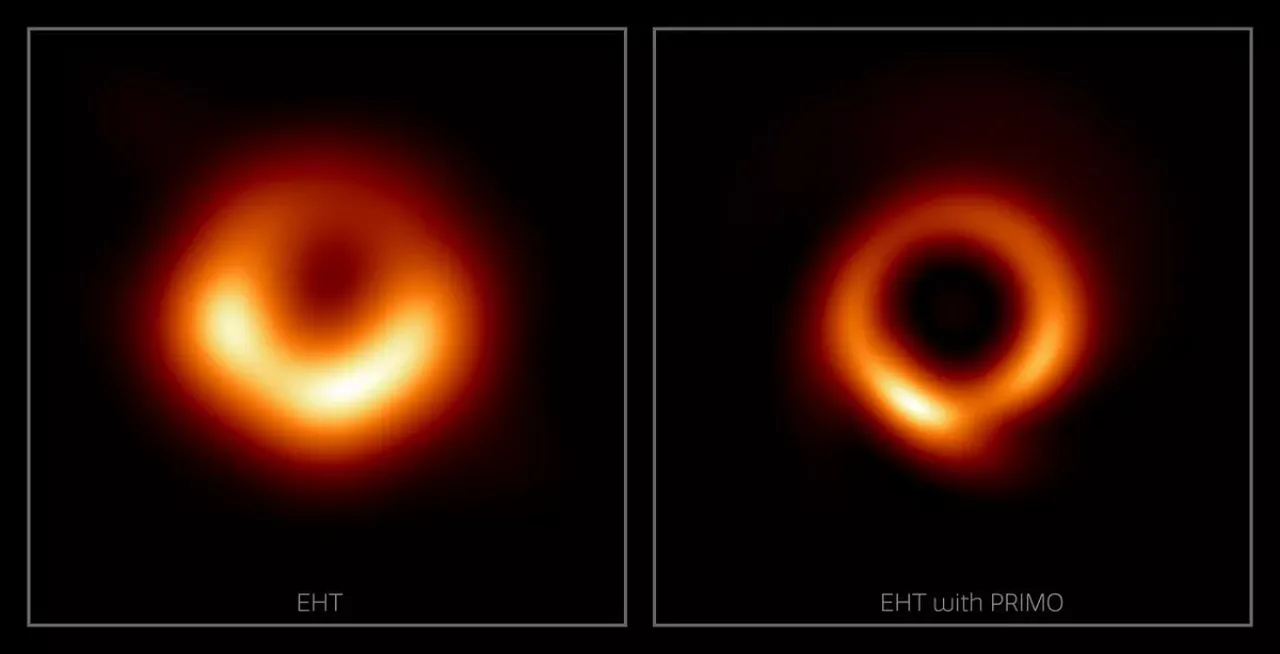‘Supermassive’ black hole looks sharper after a makeover
The Messier 87 “supermassive black hole” is an iconic space image, but it’s so blurry it could benefit from a makeover. Today, scientists showed they’ve done just that releasing a photo that shows the black hole looking sharper.
Instead of a fuzzy black spot at the blurry center of a giant galaxy, the new image shows a much bigger, clearer black hole. The “fuzzy orange donut” has become a thinner “skinny golden ring,” scientists said.
The new image shows the full extent of the dark central region and “surprisingly narrow outer ring,” said collaborators working on the new image. “With our new machine-learning technique, PRIMO, we were able to achieve the maximum resolution of the current array,” said lead author Lia Medeiros.
“Since we cannot study black holes up close,” Mederios said, “the detail in an image plays a critical role in our ability to understand its behavior. The width of the ring in the image is now smaller by about a factor of two, which will be a powerful constraint for our theoretical models and tests of gravity.”
The original image was taken in 2017 by the Event Horizon Telescope, a network of seven radio telescopes at different places around the world. That “Earth-sized” virtual telescope captured never-seen details of one of the strangest space phenomena.
A black hole “is a place in space where gravity pulls so much that even light can not get out,” NASA explains. “The gravity is so strong because matter has been squeezed into a tiny space. This can happen when a star is dying.”
Scientists can’t study them by normal means because no light gets out making black holes invisible. Scientists “think they were formed when the universe began,” NASA says in an explanation for young school students.
Could the Earth fall into a black hole’s gravity? NASA says no worries because none is close enough to our planet. And our own sun is not big enough to make a black hole itself.
